Cataract surgery
Cataract
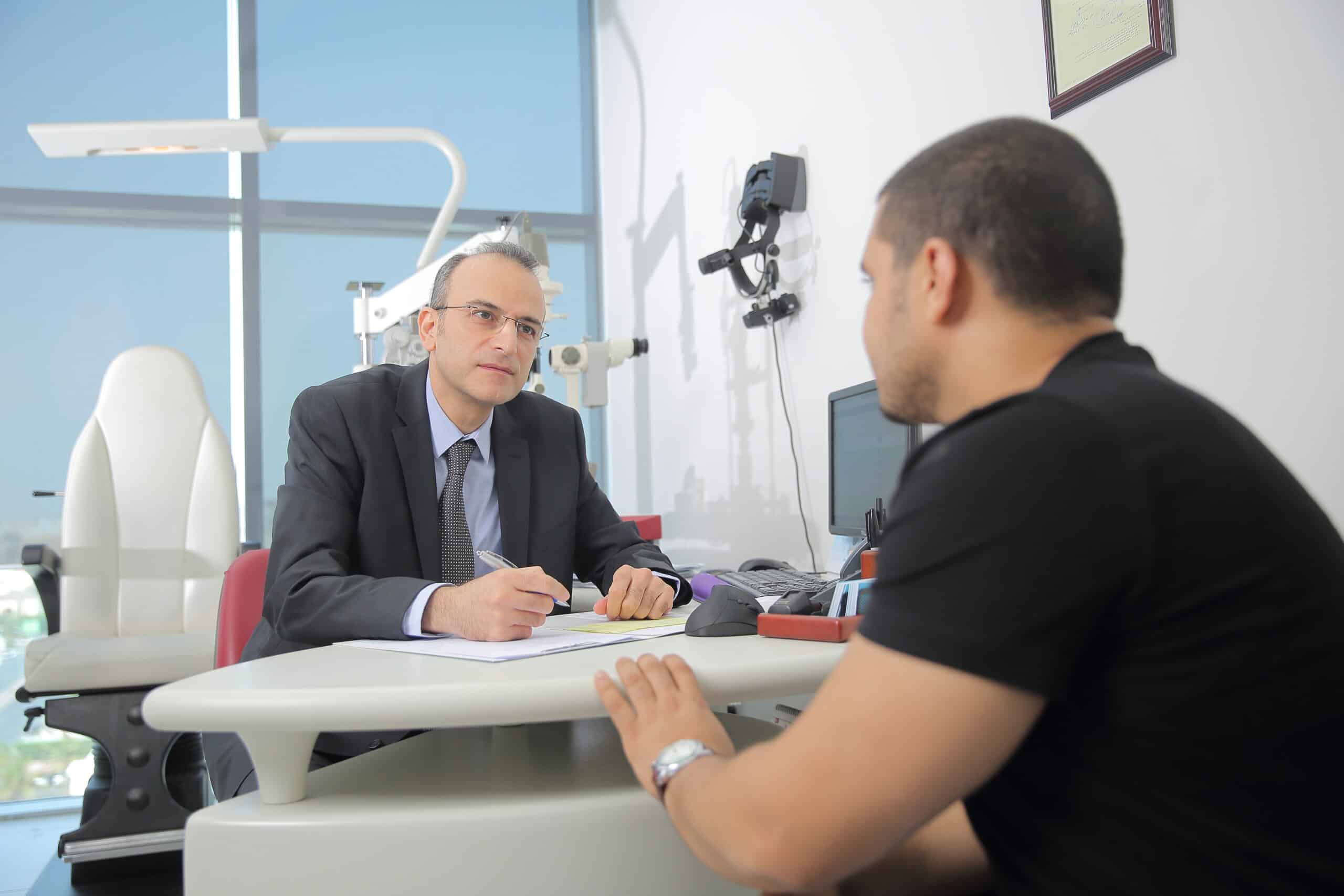
الفرق بين المياه البيضاء والمياه الزرقاء
The difference between cataract and glaucoma
Glaucoma
Cause glaucoma (damage to cells of the optic nerve).
The leading cause of irreversible blindness in the world.
Restoring normal vision is not possible, but medications, lasers, and surgeries help prevent the condition from getting worse.
Urgent surgical intervention is required especially if the condition does not respond to medications and lasers.
Cataract
Causing cataracts (clouding of the eye)
The main cause of blindness in the world.
Sight restoration is possible with surgical operations.
In most cases, there is little harm in delaying surgery. Although neglecting treatment makes the process more difficult.
Do cataracts develop into glaucoma?
Cataracts, or what we call cataracts, are caused by the accumulation of proteins dissolved inside the eye, while glaucoma or glaucoma results from the accumulation of water in the eye inside the eye. It is common for cataracts to form after glaucoma surgery, so we recommend waiting for a period of at least a year after the operation to remove glaucoma for cataract surgery and cataract removal. In both cases, the early detection of the disease and its correct treatment leads to positive results in general. However, cataracts do not need immediate intervention, while glaucoma requires immediate treatment.
What do cataracts do to the eye?
Cataracts affects the eye with age and lead to a progressive deterioration of vision. At first, vision weakens a little, then it develops to appear as if there is a blurring of the eyes accompanied by an inability to tolerate strong lights, and at the same time poor vision at night. As the condition deteriorates, the pupil turns from normal color to gray or white, and here visual acuity weakens completely.
Cataracts form and the proteins of the lens of the eye breakdown with age, and some other diseases that also appear with age lead to this process speeding up, such as diabetes and high blood pressure, in addition to the overuse of certain medications.
Treatment of cataracts in the eye (cataract surgery)
The team of professional doctors at Batal Eye Specialist Center performs various examinations in this area. If the cataract is not harmful, the physician may advise the treating doctor to postpone the surgical intervention, but as soon as the cataract begins to block the vision, the thinking turns towards conducting the necessary tests and surgical solutions.
Before diagnosing cataracts in the eye, the doctors here at the Batal Specialist Complex use a number of careful examinations to rule out any other diseases. Our doctors use IOL biometrics to check the strength of the lens inside the eye, specular microscopy to check the condition of the cornea, a visual field test to monitor the condition of the retina, and ultrasound scans for severe cataracts that hinder retinal imaging.
The clouding of the eye’s natural transparent lens prevents light from reaching the retina, and with age, vision becomes more blurry, and with neglecting treatment, we may lead to a complete loss of vision. It is not possible to treat with medication or correct it with glasses, and the patient needs surgery to remove the cataract.
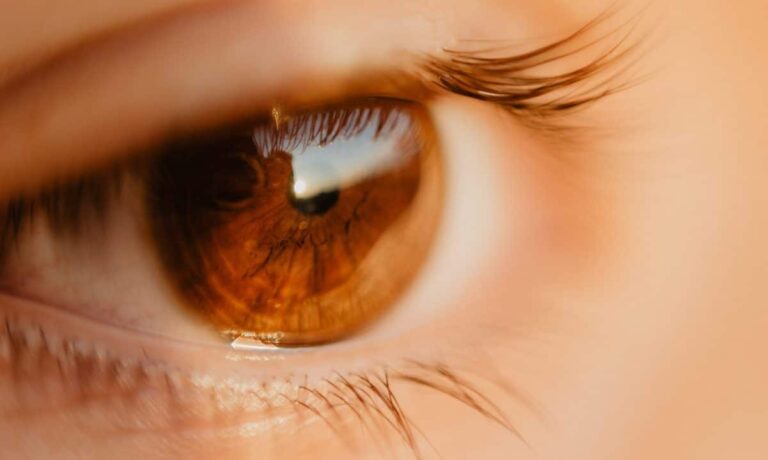
How does cataract surgery work?
The doctor removes the cloudy lens and replaces it with a transparent lens through an incision not exceeding 2 mm — smaller than the incision in LASIK operations. Your eyes will be numbed with drops or injections and you will remain awake but you will not feel any pain during the procedure. The ophthalmologist may ask the patient to stop taking in food 6 hours before the operation and to stop any medication to avoid bleeding during the surgery.
The doctor performs the operation using (camera/ultrasound/scanning device) to map the patient’s eye and collect information about the lens, then this data is sent to a computer that programs the laser to make the incisions required in the surgery accurately. In most cases, it is allowed to go home immediately after surgery. The doctor will place a bandage over the eye and ask you to rest for thirty minutes before leaving.
What is glaucoma?
It is the vision thief, as the patient does not show symptoms in many cases, and it may not be noticed by anyone in the early stages. Glaucoma is the number one cause of untreated blindness around the world, and it is a group of diseases where the increased pressure in the eye damages the optic nerve. There is still no cure for this disease, so treatment focuses on relieving symptoms and preventing further damage by lowering eye pressure to prevent vision loss.
Symptoms of glaucoma
Sudden and severe headache, nausea, blurred vision, seeing halos around bright lights. The patient may have high blood pressure and a vague feeling of heaviness. However, it is often without symptoms and the patient may not feel any symptoms when he visits the ophthalmologist.
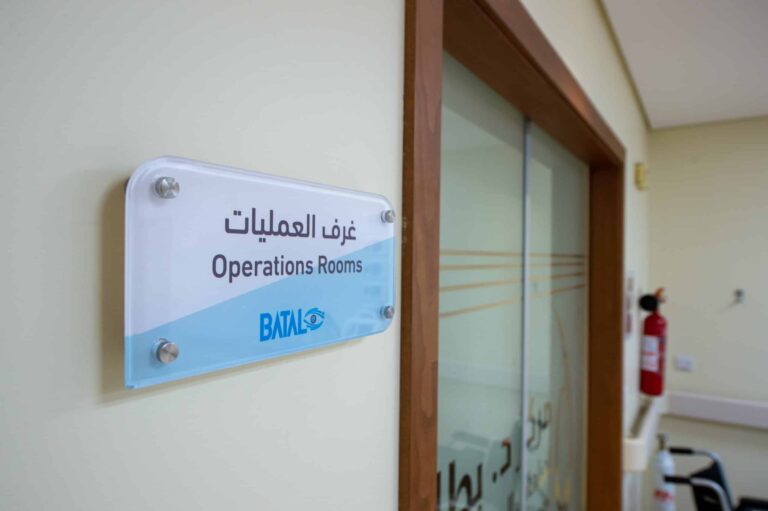
Treating Glaucoma in the eyes
Glaucoma is an urgent medical condition that needs immediate treatment. Once diagnosed, treatment should begin as soon as possible to help reduce the risk of permanent vision loss. Most cases of glaucoma can be treated with eye drops, lasers, or microsurgery. The best treatment depends on the degree of disease.
Medicinal treatments for glaucoma
Eye drops are used to reduce fluid production in the eye or the drainage of excess fluid that causes high eye pressure, but it may lead to eye redness, irritation, blurry vision, increased heartbeat or dry mouth, and a marked change in the color of the eyes and the surrounding skin, so patients should inform Doctor if they suffer from any kind of allergies to reduce side effects. In some cases, your doctor may prescribe medication to accompany the drops, in the form of tablets, syrups, or injections to improve pressure control
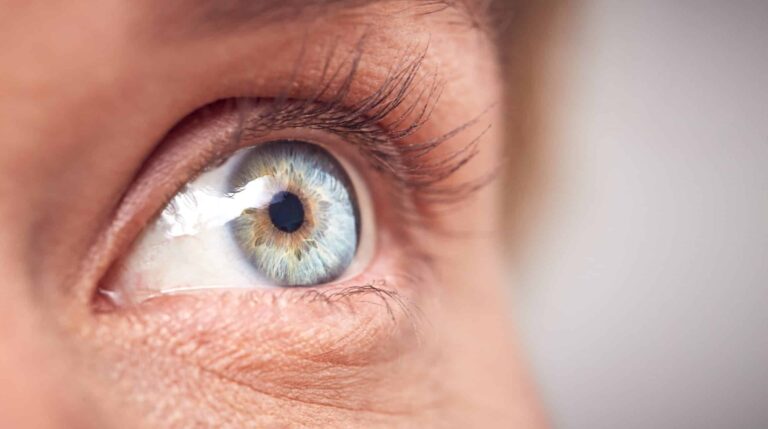
Laser treatment of glaucoma
At Batal Eye Specialist Center, we resort to laser surgery if the drops do not improve the condition. Using a low-energy laser beam, we get long-term results, as this procedure offers a simple solution to treat the symptoms of glaucoma in the eye through a minimally invasive process without side effects, scars or pain. It is an effective treatment option for almost all patients and is more suitable for patients who are unable to continue using the drops on a daily basis due to either cost, discomfort, or side effects.
This process controls the symptoms of glaucoma for up to years without the need for additional medications, and it has no major risks or complications.
Microsurgery (glaucoma filter surgery)
We often perform microsurgery after failed medications and laser therapy to drain the accumulated water in the eye that is pressing on the optic nerve, causing glaucoma.
Preventing glaucoma
Although there are no surefire ways to prevent glaucoma from forming, regular check-ups and early detection are the best forms of protection against damage caused by glaucoma in the eye, as well as paying attention to:
Excessive coffee consumption of more than 2 to 3 cups a day leads to elevated eye pressure and it is best to avoid it.
Patients with an advanced stage of glaucoma should avoid weight-bearing exercises or push-ups that cause a lot of stress, such as some yoga exercises (head down).
Some people are more susceptible to the disease, and these are those over the age of sixty, those with a family history of glaucoma, those with low vision, and those with diabetes.
In Batal Center, the attending physician will measure the eye tension to measure the intraocular pressure and examine the optic nerve by conducting a visual field test (OCT) to assess the percentage of damage to the optic nerve, and to examine the cornea. On a color image of the optic nerve to monitor the size of the optic nerve. Depending on the condition of your eyes, our doctor will recommend some or all of these tests.
It is advised that patients undergo a comprehensive examination of the fundus at least once every two years, especially if they are more vulnerable to infection. With a team of specialists in treating glaucoma and Cataractr, assisted by technology and the latest diagnostic and treatment devices, we are fully prepared to discover the early stages of injury and ensure comprehensive treatment and delicate surgeries. To know more about the treatment and surgery of cataracts and glaucoma, please contact us on the numbers shown.
Treatment of cataracts in the eye
(cataract surgery) Cataract tests at Hero specialized complex in Jeddah The team of professional doctors at the hero eye specialist center conducts various examinations. If the cataract is harmless, the attending physician may advise postponing the surgical intervention, but as soon as the cataract begins to block vision, the thinking turns to conducting the necessary examinations and surgical solutions. Doctors of the champion specialist complex before diagnosing cataracts in the eye use a number of careful examinations so that any other diseases are excluded. Our doctors use IOL biometry to check the strength of the intraocular lens, mirror microscopy to check the condition of the cornea, visual field testing to monitor the condition of the retina, ultrasound scanning in cases of severe cataracts that hinder retinal imaging. The clouding on the natural transparent lens of the eye prevents light from reaching the retina and with age the vision becomes more blurry and with neglect of treatment we may reach a complete loss of vision. Treatment with medication or correction with glasses is not possible and the patient needs surgery to remove cataracts. Operation Cataract In cataract surgery to remove cataracts from the eye, the doctor removes the cloudy lens and replaces it with a transparent lens through an incision not exceeding 2 mm smaller than the incision in LASIK and refractive correction prk operations. Your eyes will be anesthetized with drops or injections and remain conscious, but you will not feel any pain during the procedure. The ophthalmologist may ask the patient to stop eating 6 hours before the operation and stop any medication to avoid bleeding during surgery. The doctor performs the operation using (camera / ultrasound / scanning device) to map the patient's eye and collect information about the lens, then this data is sent to a computer that programs the laser to accurately make the required incisions in surgery. In the majority of cases it is allowed to go home immediately after surgery. The doctor will put a bandage on the eye and will ask you to rest for thirty minutes before leaving. Surgical options for cataract surgery Intraocular lens (IOL) Although all intraocular lenses are used to restore clarity of vision, there are several intraocular lens options available to patients today namely: Standard monofocal lens implants: which means that they are designed to correct vision with one focal length and if the patient chooses to implant intraocular lenses that are suitable for distance vision in both eyes, he will most likely need reading glasses and some patients choose an IOL lens that corrects their distance vision in one eye and an IOL that corrects their near vision in the other eye. Premium IOLs: premium intraocular lenses include presbyopia correcting lenses and monocular intraocular lenses and the decision to use these lenses should be made on an individual basis. Intraocular lenses for the correction of presbyopia: for the correction of near vision the intended goal of these lenses is to reduce the need for glasses. Toric intraocular lenses are used for patients with astigmatism and astigmatism refers to irregular curvature of the cornea and toric IOLs lenses are designed to correct distance vision and astigmatism. Femtosecond laser Femtosecond laser is another option available for the doctor to use during cataract surgery, it is a laser approved by the food and Drug Administration (FDA) and computer-guided.this device can help the surgeon perform some of the steps involved in cataract removal and can also be used in procedures performed to correct astigmatism. Finally, in the hero complex, the attending physician will perform a tonometry to measure intraocular pressure and examine the optic nerve by performing an Oct visual field test (measuring the visual circumference) to assess the percentage of optic nerve damage, examine the cornea, and the doctor may resort to ophthalmoscopy to measure the extent of optic nerve damage along with computed tomography to obtain a color image of the optic nerve to monitor the size of the optic nerve. Depending on the condition of your eyes our doctor will advise some or all of these tests. Patients are advised to undergo a comprehensive examination of the fundus at least once every two years, especially if they are more susceptible to infection. And with a team of specialists in the treatment of Glaucoma and Cataract, assisted by technology and the latest diagnostic and treatment devices, we are fully prepared to detect the early stages of infection and ensure comprehensive treatment and microsurgery. To learn more about the treatment and surgery of Cataract and Glaucoma , please contact us on the numbers shown.
What are the dangers of cataracts
Although cataracts are generally safe but like any surgery cataracts carry risks of problems or complications and the following are some of these risks: Inflammation of the eye. Bleeding in the eye. Persistent swelling on the front of the eye or inside the eye. Swelling of the retina (the nerve layer at the back of the eye). Retinal detachment (when the retina is lifted from the back of the eye). Blurred vision i.e. blurred vision. Loss of vision. Damage to other parts of the eye. Dry eyes and deals with this with eye drops. Here you should contact the Eye Center at the specialized hero complex in Jeddah to find the best treatment. Allergy to anesthetics it is possible that a person has an allergic reaction. Cataracts will not restore vision lost from other eye conditions such as macular degeneration, glaucoma, or diabetic retinopathy. Cataract operation costs The costs of cataracts are generally covered by insurance companies so it is possible to talk with an ophthalmologist when considering cataract surgery ahead of time. Signs that you may need a cataract operation The likelihood of developing cataracts increases with age and tends to gradually worsen over time as specific ways in which cataracts may impair vision include: Blurry vision. Poor night vision. Auras. Double vision. Sensitivity to glare and bright lights. The colors appear faded. Cataract recovery and diagnosis People can see better after cataracts, as the procedure is considered safe and has the ability to restore vision to pre-cataract acuity, and the procedure is quick and does not require an overnight stay at the center, so when suffering from visual impairment due to cataracts, you should visit the Eye Center at Al-Batal specialist complex in Jeddah to find out if the person is a good candidate for surgery. How long does Cataract take Cataracts are usually very fast, the procedure itself from the very beginning takes only about 20-30 minutes to the end. Is Cataract painful Although it is likely that the person will be awake during the surgery, it is generally not painful because they are under local anesthesia where slight discomfort can be felt but severe pain is uncommon. Aftercare for Cataract in the hero specialized complex In most cases, a significant improvement will be felt in the first several days, although it takes up to a month to fully recover, and the Eye Center at the hero specialist complex may offer special eye drops for pain and to prevent infections, and may ask to wear a protective mask at bedtime. During the recovery period, sunglasses should be worn while outdoors to protect the eyes from sunlight and should not touch the eyes or get anything into them. Important tips Do not drive immediately after surgery.
Try to sleep on the back or on the other side of the eye to avoid direct pressure that may displace the lens. Strenuous activities should be avoided immediately after surgery. Other restrictions after Cataract Other recommendations for eye protection after surgery include avoiding the following: Ingress of soapy water into the eye.
Touching the eyes.
Swimming. Apply mascara for a week or two.
Use a face cream.
Dust. Cataracts are one of the most common and honest surgical procedures performed, this procedure is quick and does not require an overnight stay in the hospital, and many insurance companies cover the cost.
we recommend visiting the Eye Center at Batal specialist complex to conduct a comprehensive eye examination and provide the best types of treatment.
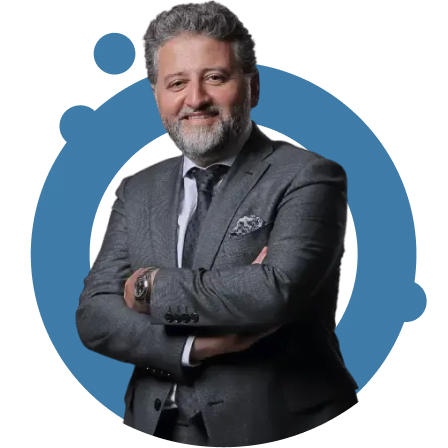
Senior Consultant, Pediatric Surgery and Eye Surgery Fellow of the British Royal Surgical College Fellow of the American Academy of Ophthalmology.
Member of the British Royal College of Surgeons and Member of the American Academy of Ophthalmology



